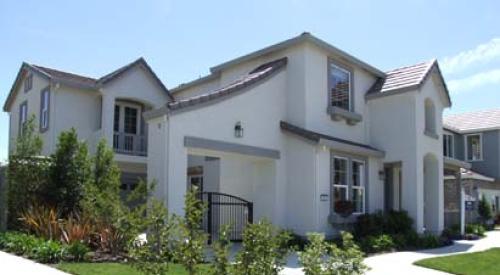Latest numbers on the economy show that Gross Domestic Product grew 6.9% in the fourth quarter of 1999, the leading economic indicator index rose from 105.5 to 106.1, and consumer confidence rose from 134.2 to 141.7. And all this happened even as consumers were being bombarded with predictions of an im-pending Y2K disaster.
Employment growth in the fourth quarter reversed a downward trend from previous quarters. On December 31, 1999, the U.S. economy had 2.55 million more employees than a year earlier, a growth rate of 2.0% for all of 1999.
Meanwhile, Greenspan's tightening moves pushed the 30-year, conforming, fixed mortgage rate to 8.23% in mid-March of this year, up from 7.91% in De-cember, 1999, and 6.74% in December, 1998. So in only a 15-month period, mortgage payments have increased 15% even without taking into account wide-spread rises in home prices.
John Burns, principal of housing statistics research giant The Meyers Group (which owns U.S. Housing Markets, a national firm that measures permit activity in major metro markets across the country), says, "For the first time in more than 30 years, the housing market is hot in every region of the country. Rising mortgage rates will slow new home construction this year, but we anticipate another very good year for home builders."
That has a familiar ring. For the last three years, every economist in the housing industry has said pretty much the same thing: ''Last year was great, but it can't possibly get better this year.''
Or can it? Nationwide, new housing demand (as measured by employment growth) exceeded supply by 37% in 1999. If employment growth stays high, housing demand is likely to continue to exceed supply for some time to come.
U.S. Housing Markets statistics on permit activity show the hottest housing states are California and Florida, where job growth is strong and permits are low due to long entitlement processes. Among local markets, U.S. Housing Markets says the hottest are New York-Long Island, Los Angeles, West Palm Beach (Fla.), Tucson, Tampa Bay, Orange County (Calif.), and Sarasota (Fla.). All these markets had demand for twice as many new housing units as the market supplied.
Atlanta continues as the top market in gross numbers, with 60,477 units per-mitted in 1999, an increase of 4.6%. Largest increases were recorded in San Diego (37%), Tampa Bay (23%), and the Los Angeles CMSA (19%). The biggest declines were in Houston (-22%), Port-land (-16%), and Dallas/Ft. Worth (-12%). Las Vegas also experienced a 12% de-cline in total permits, despite breaking the single-family permit record. The drop was entirely due to a 36% decline in multifamily permits.
John Burns says the current housing boom, now running into its eighth year, is caused by multiple factors: (1) low mortgage rates, (2) a shift in demographics toward more people in their prime home ownership years, (3) pent-up demand for move-up housing from the recession of the early 1990s, (4) and an economic expansion that is unprecedented in terms of both length and low unemployment rates.
He now expects the market to cool due to higher mortgage rates and the expulsion of pent-up demand. But remember, we've heard all this before. And it''s largely based on experience with past economic cycles.
What we really don't know is what impact the "new economy," driven by emerging technologies and e-commerce, will have during the coming year.
Hang on, it's going to be some ride.












